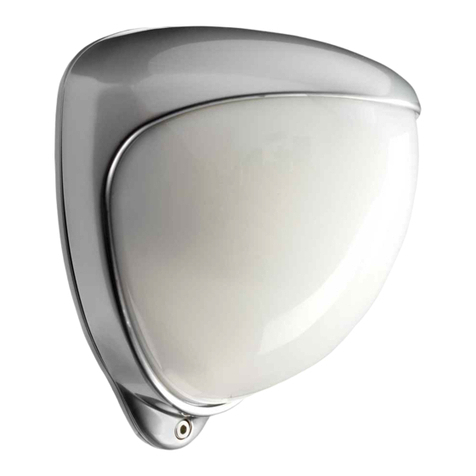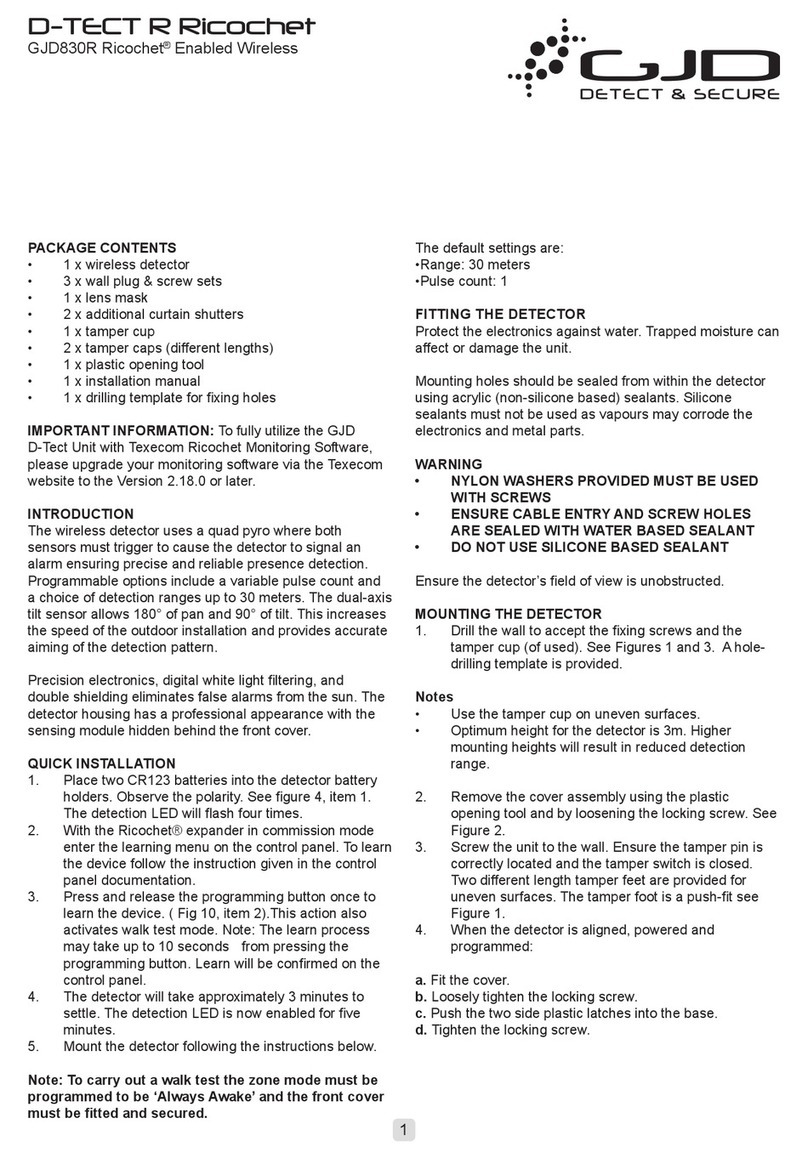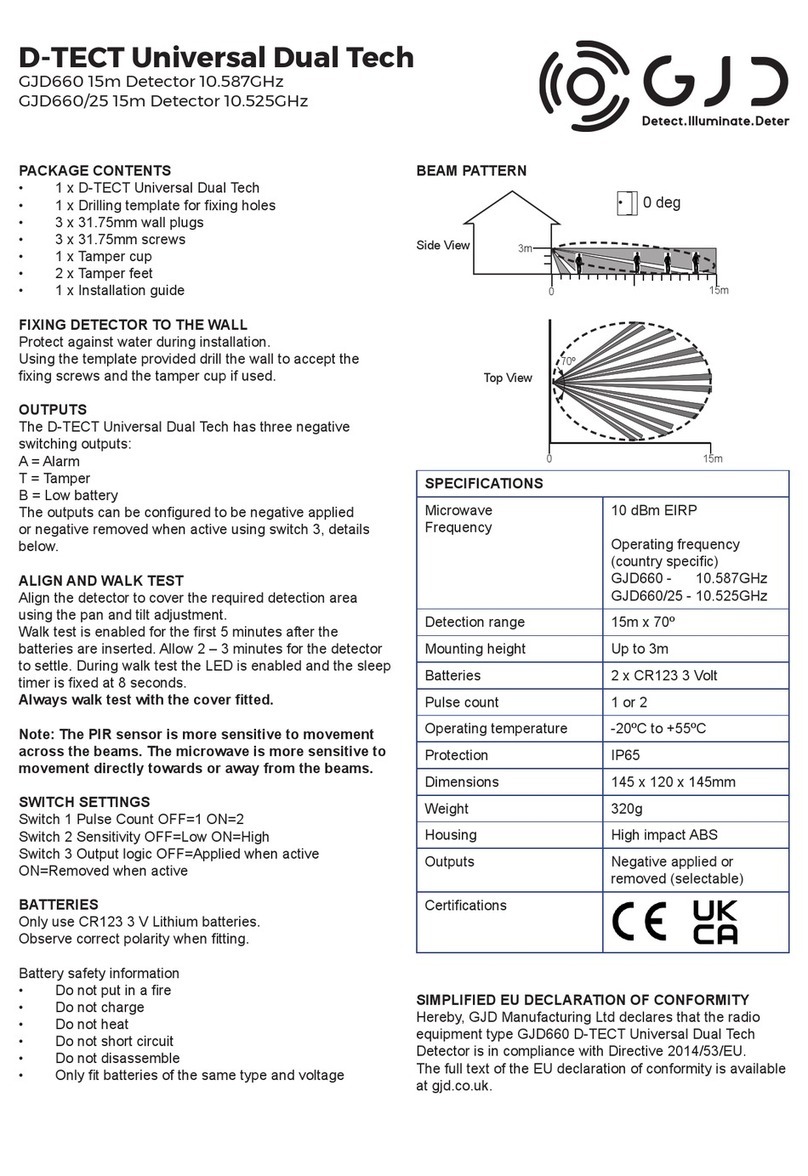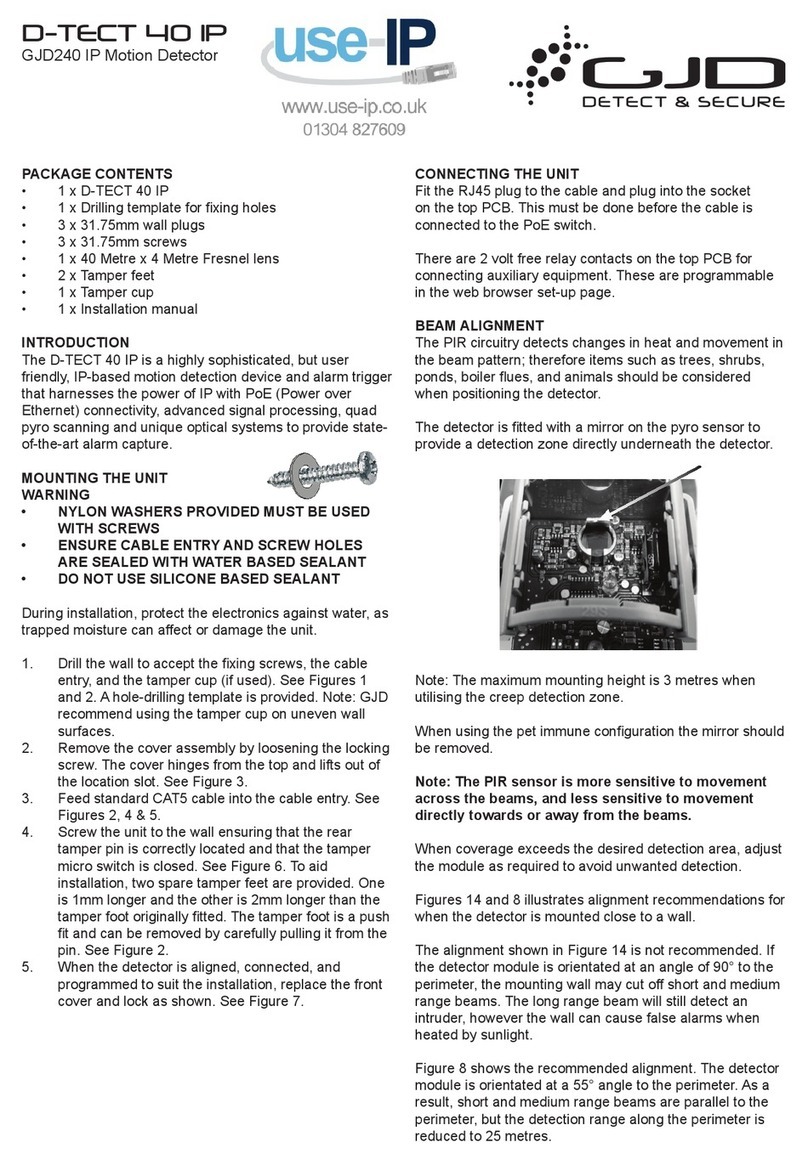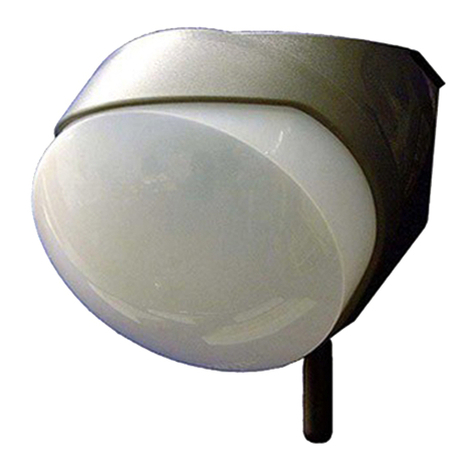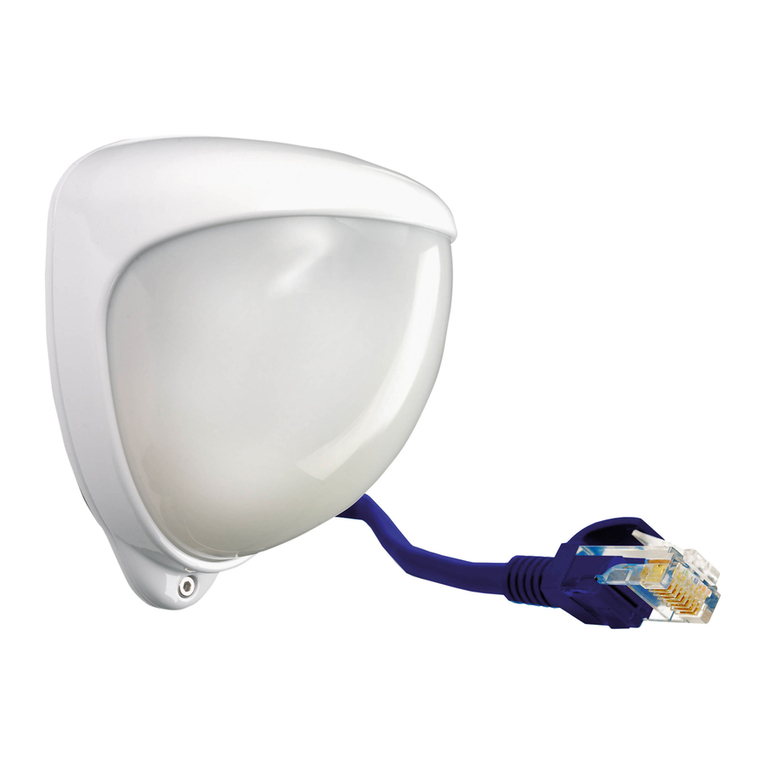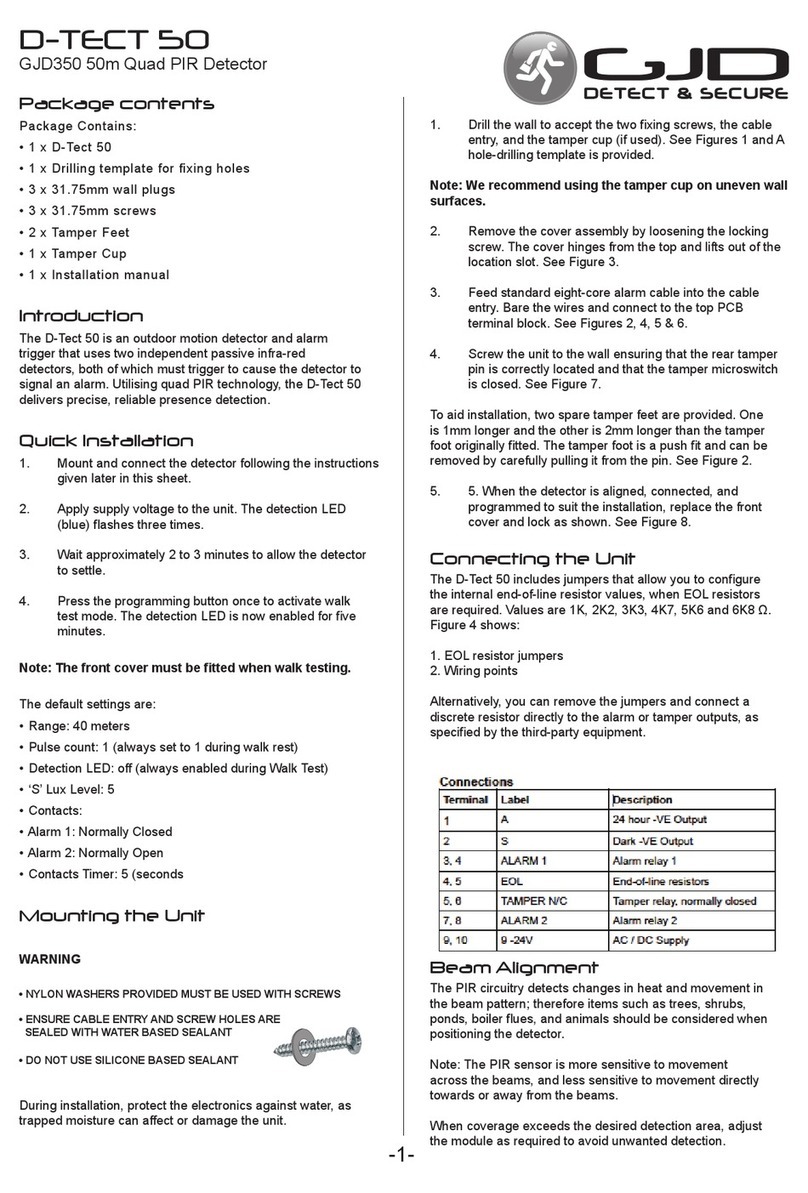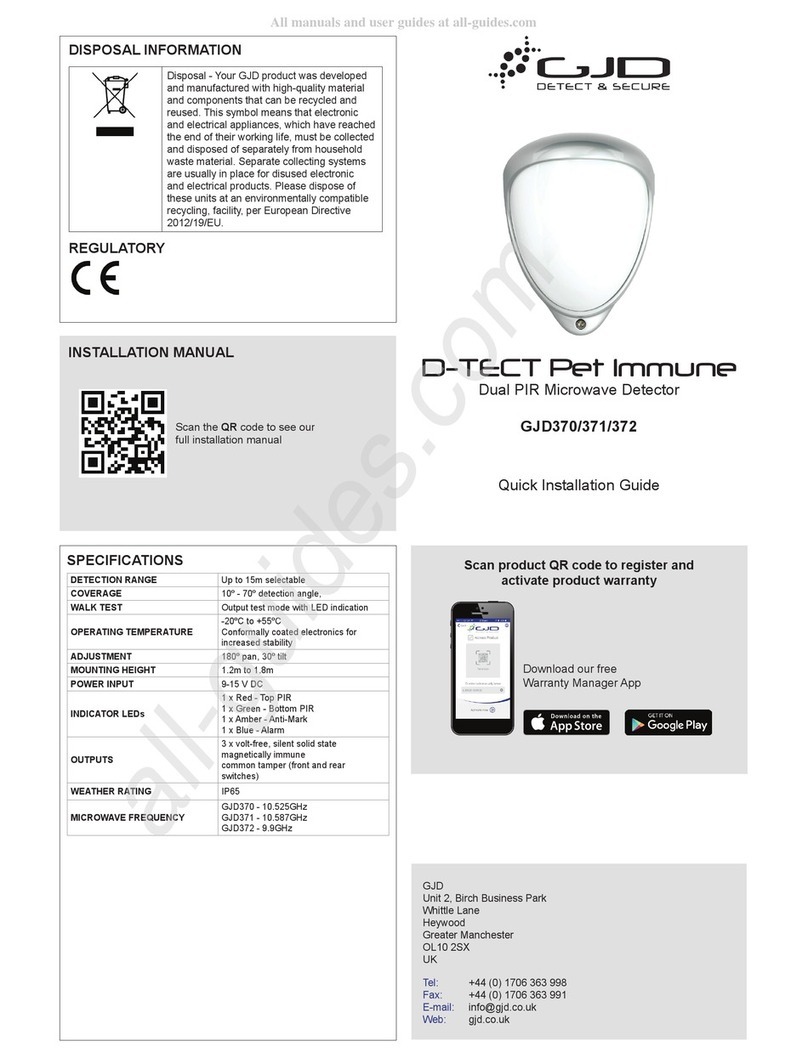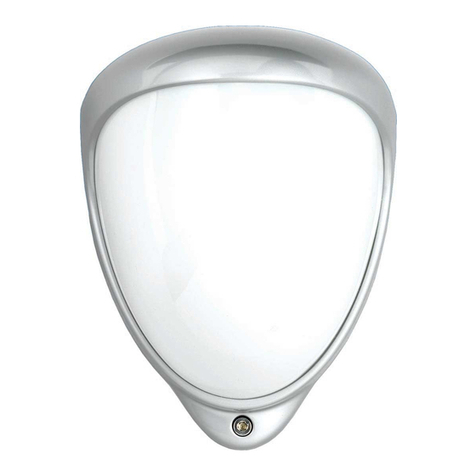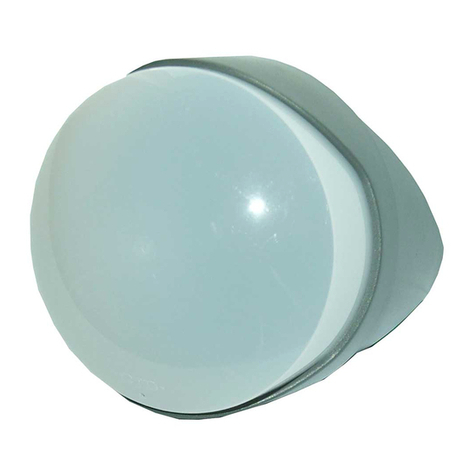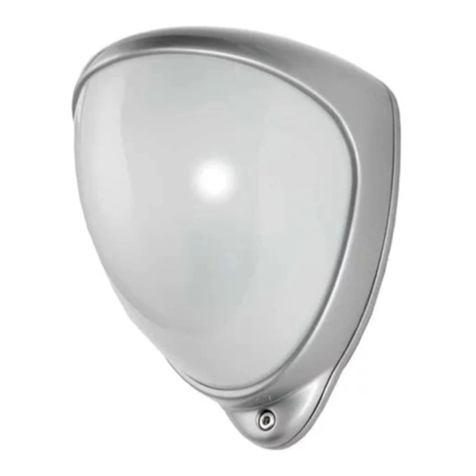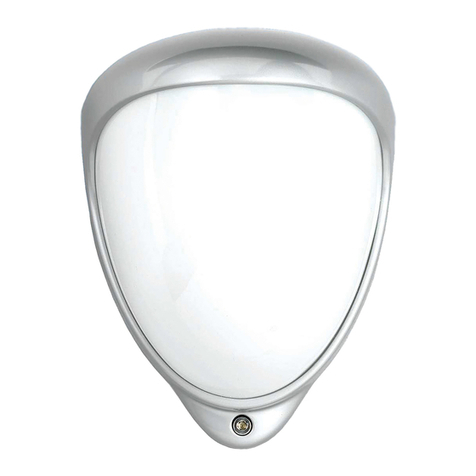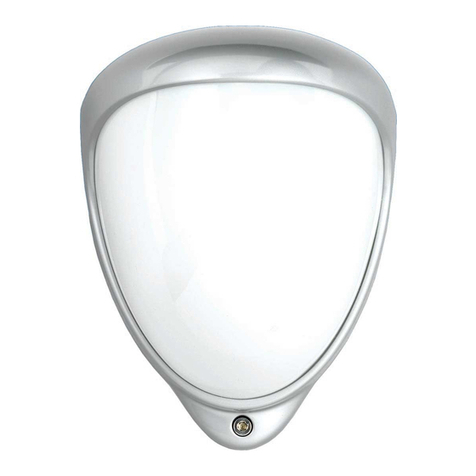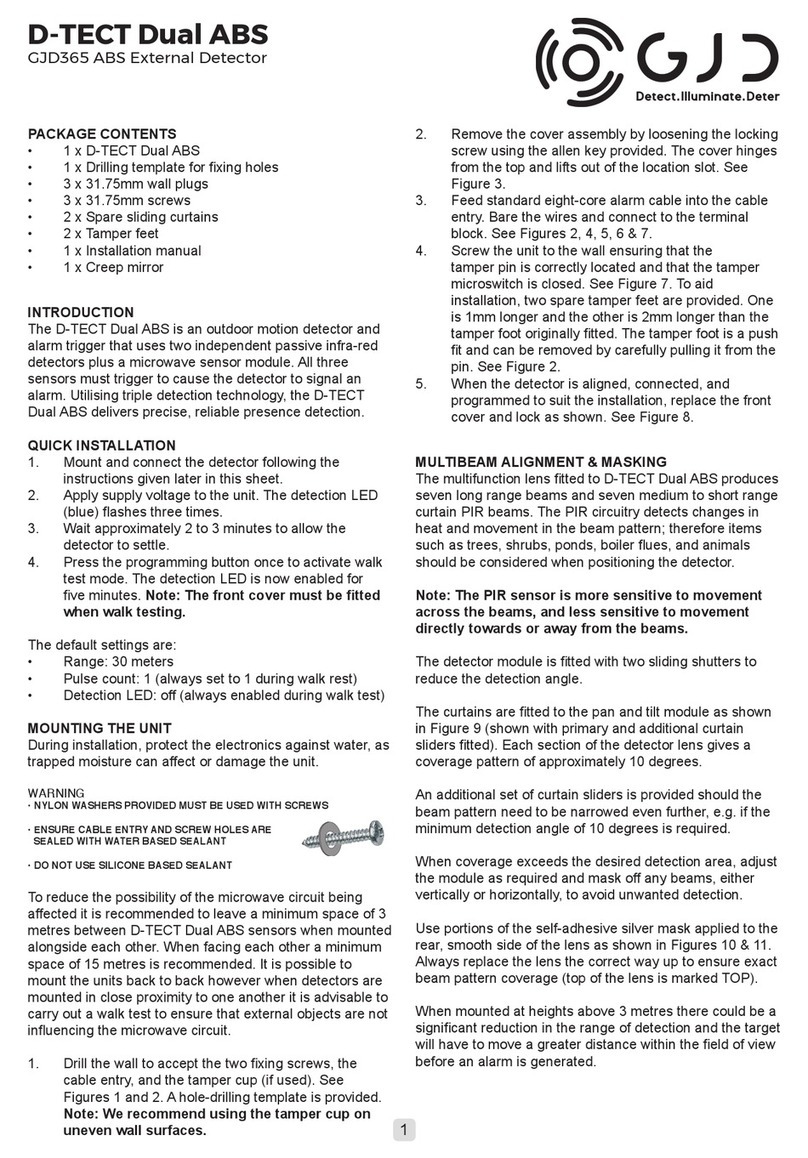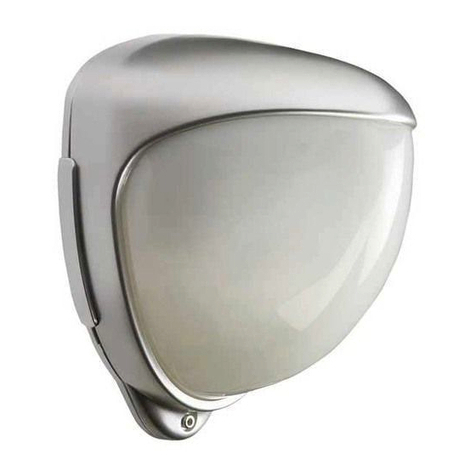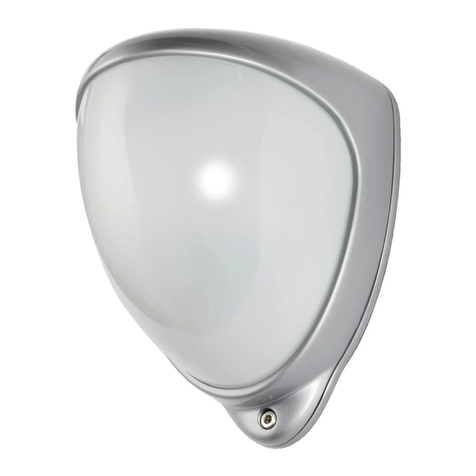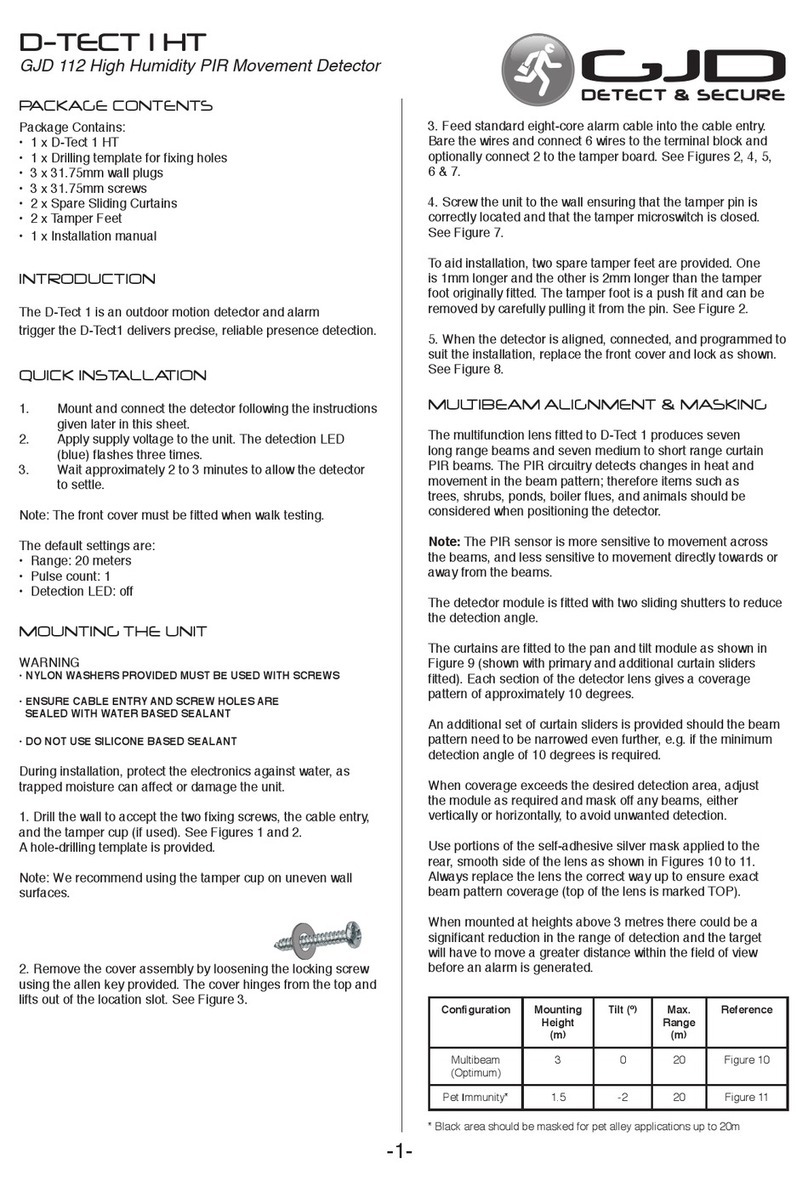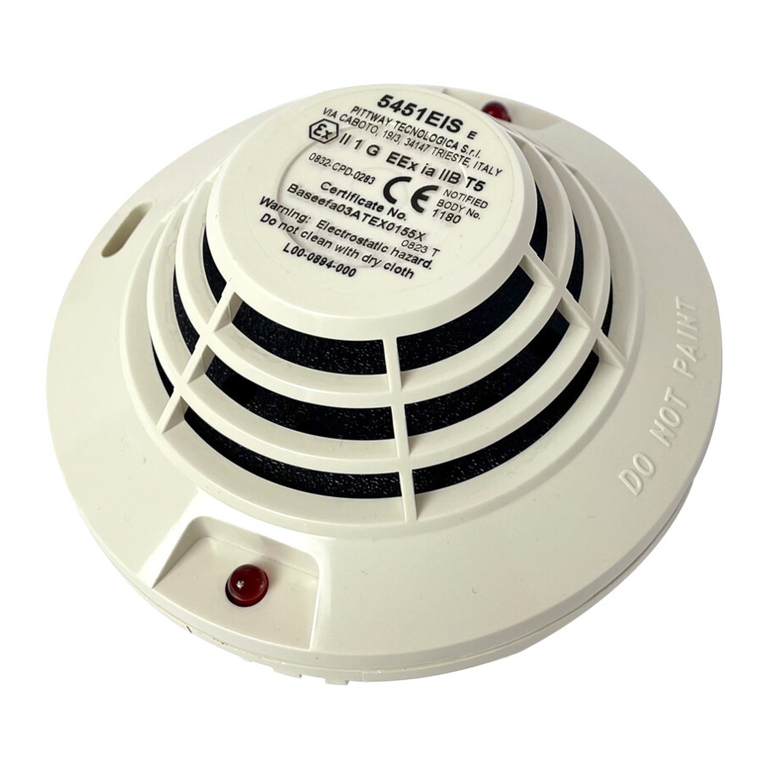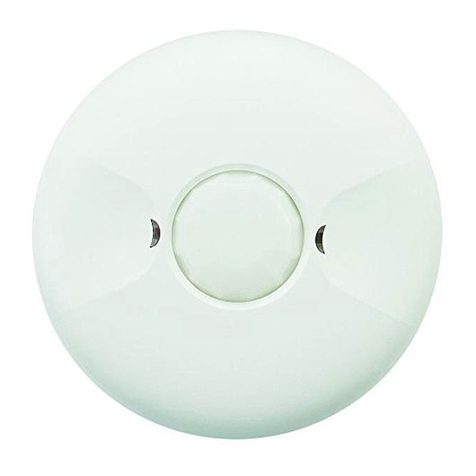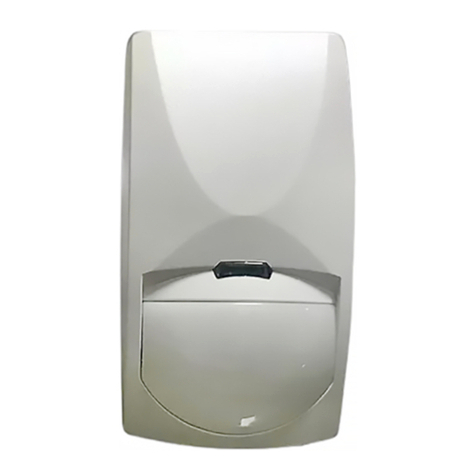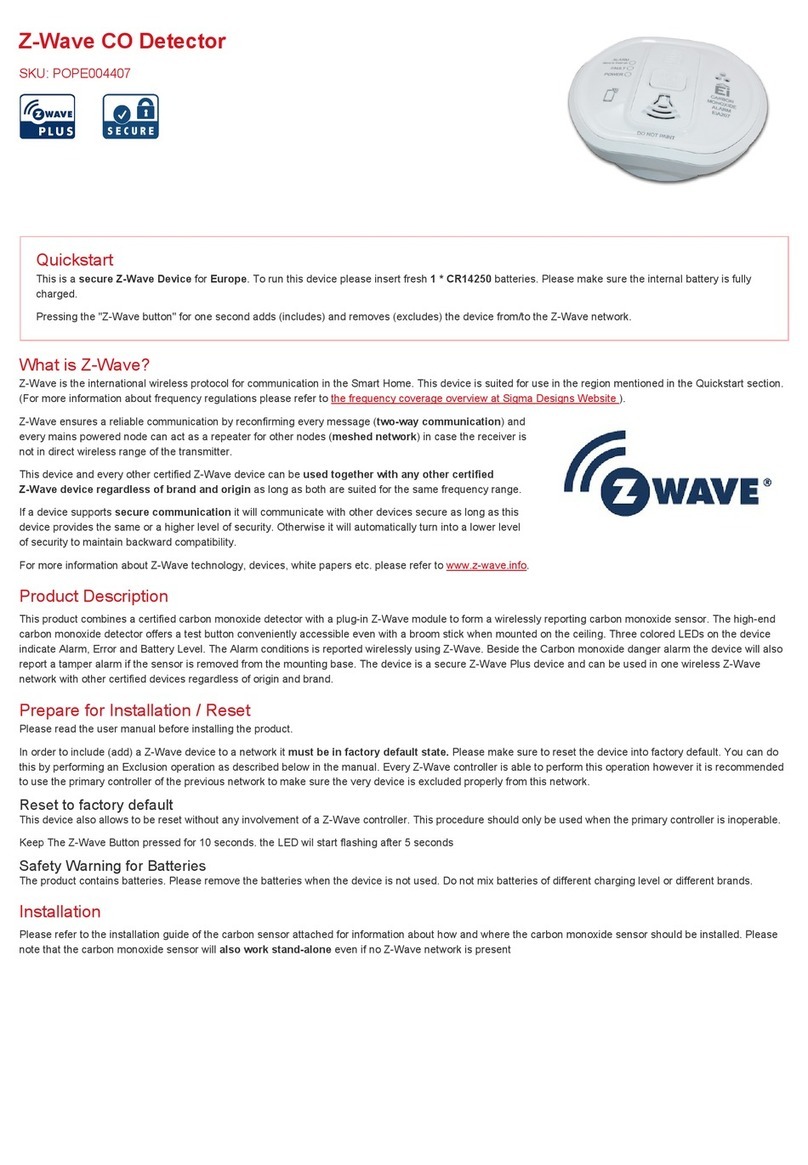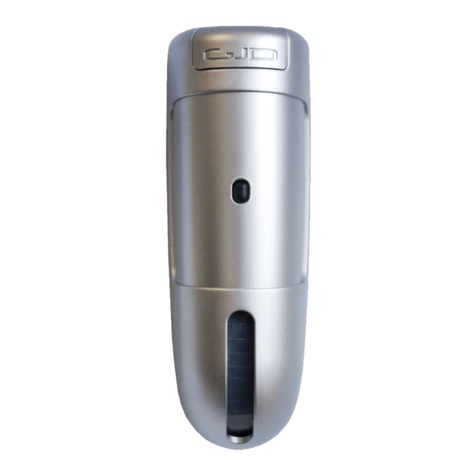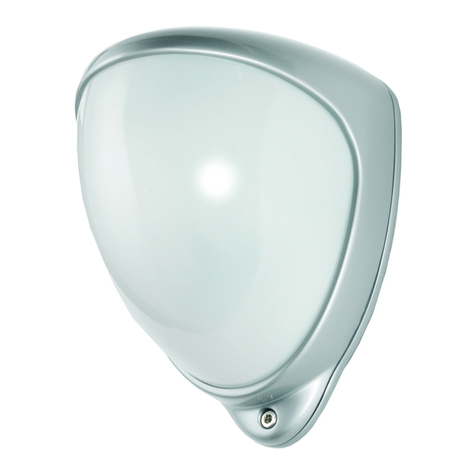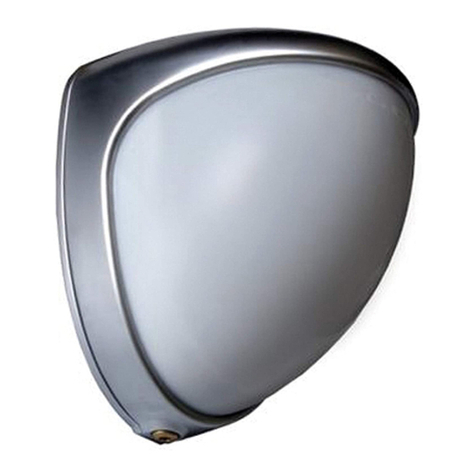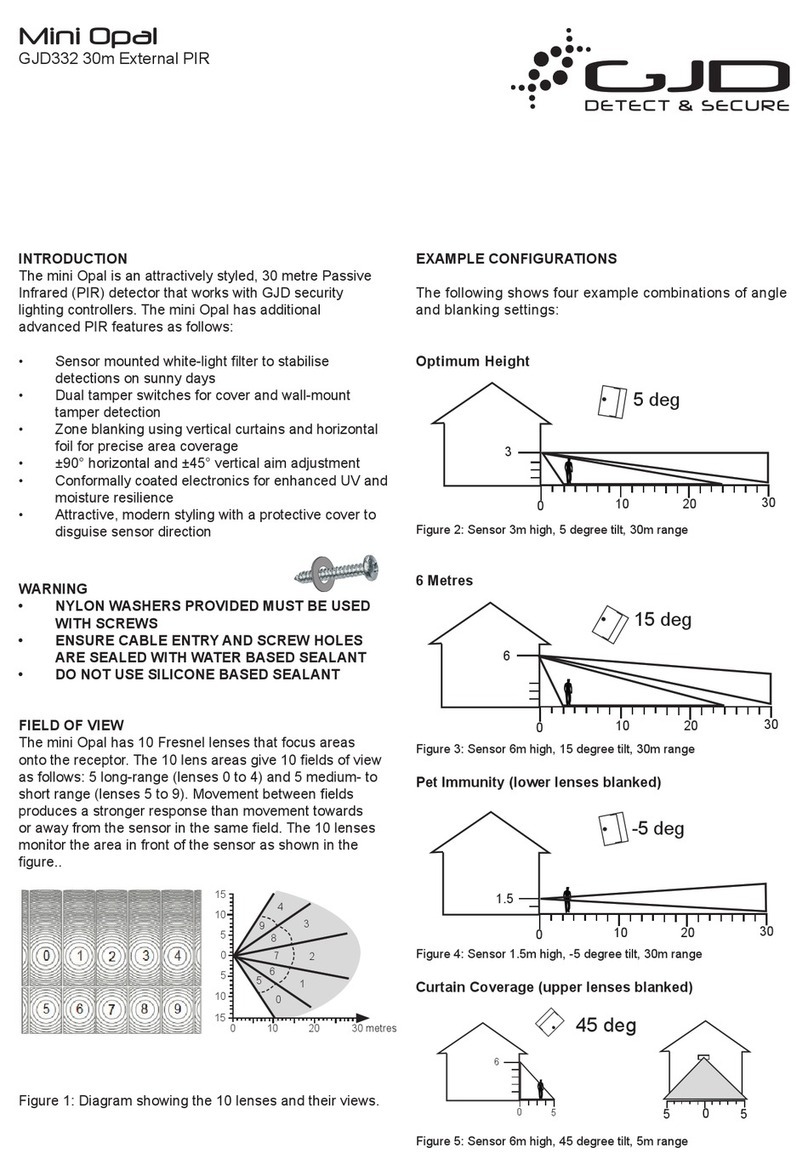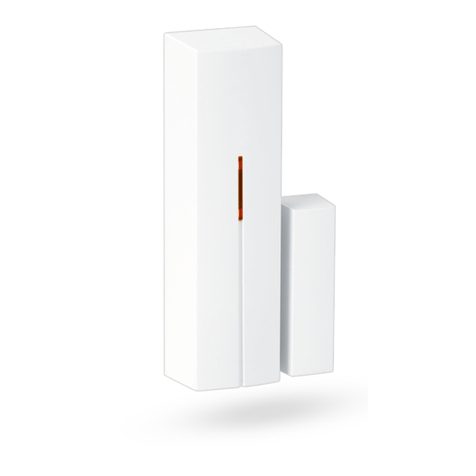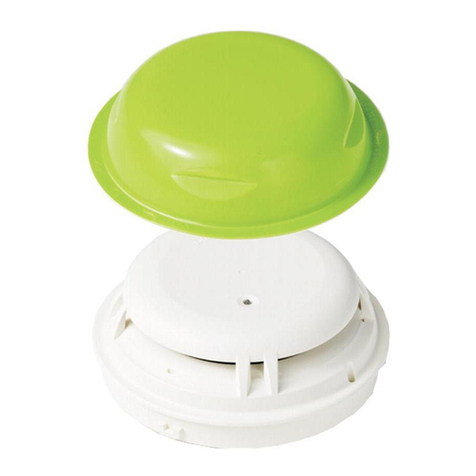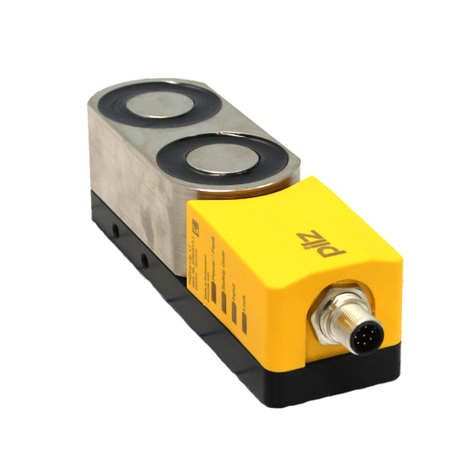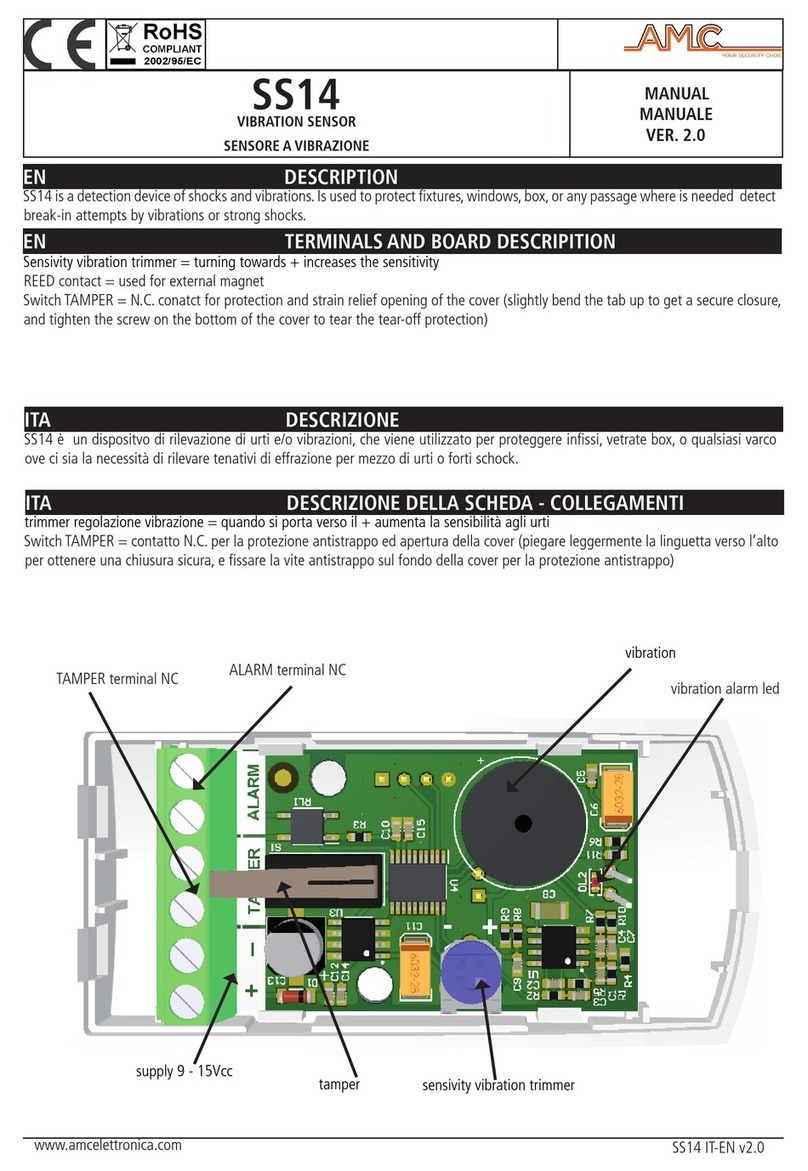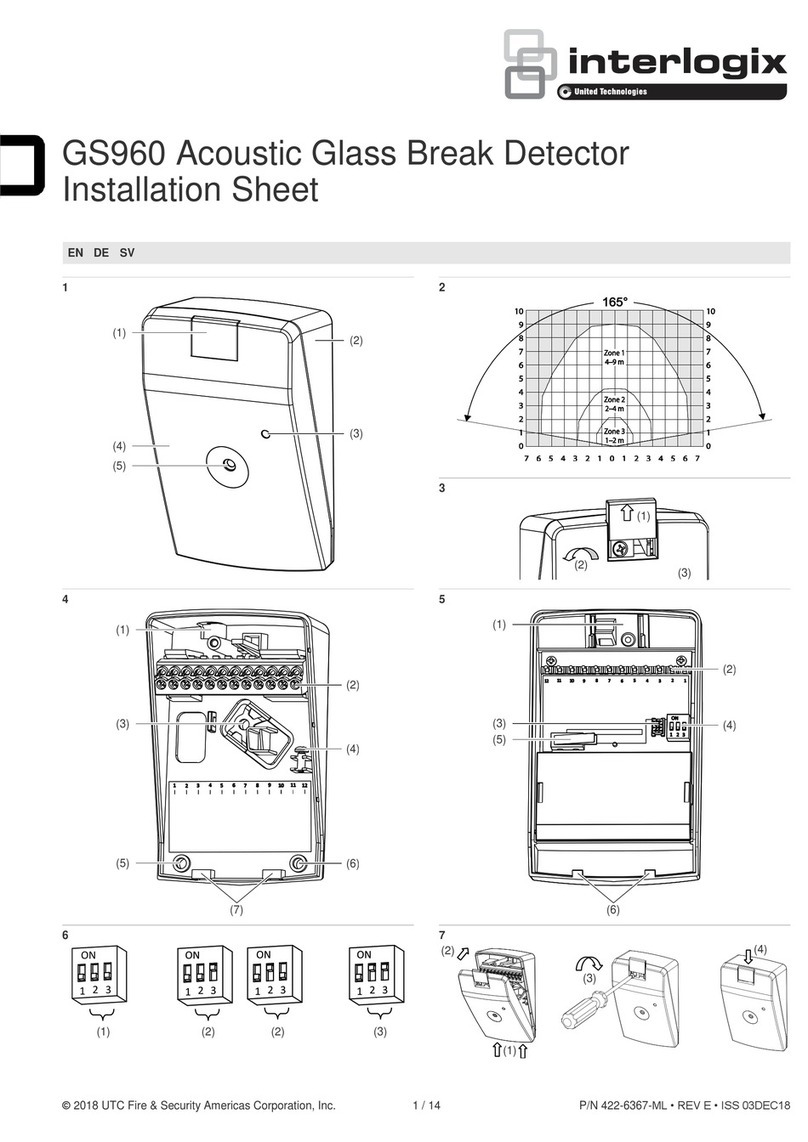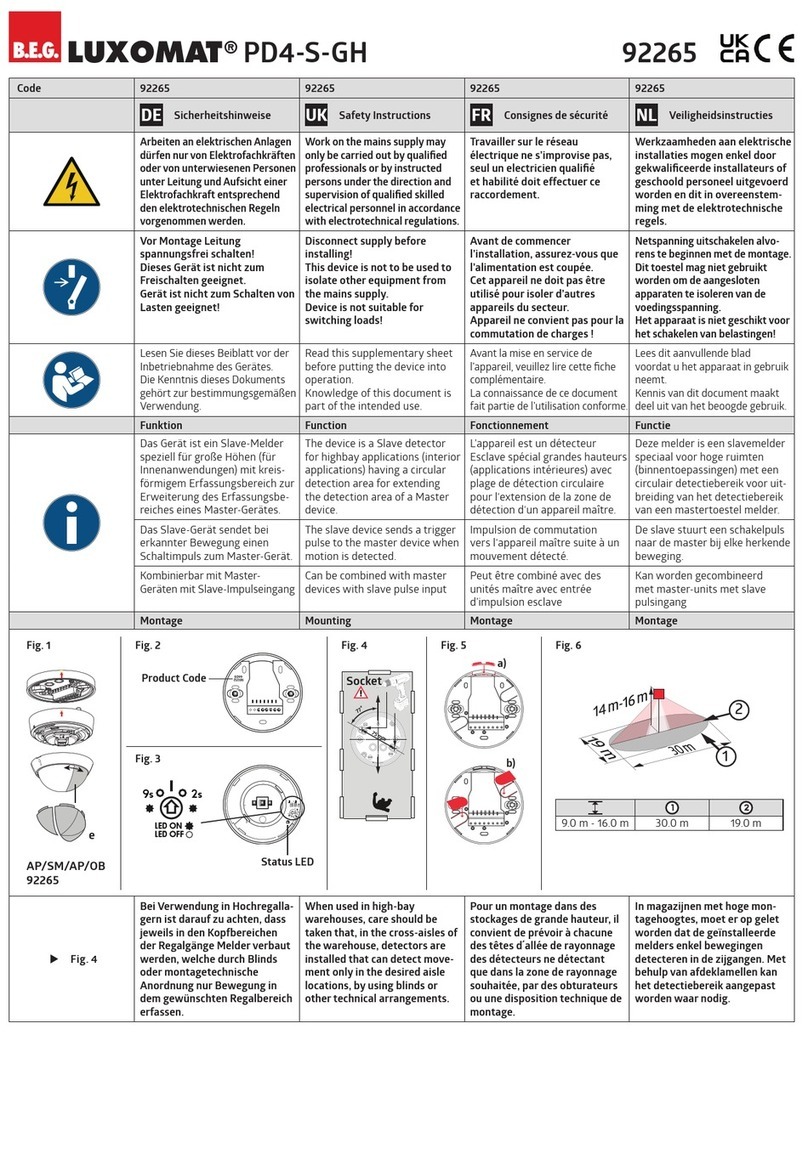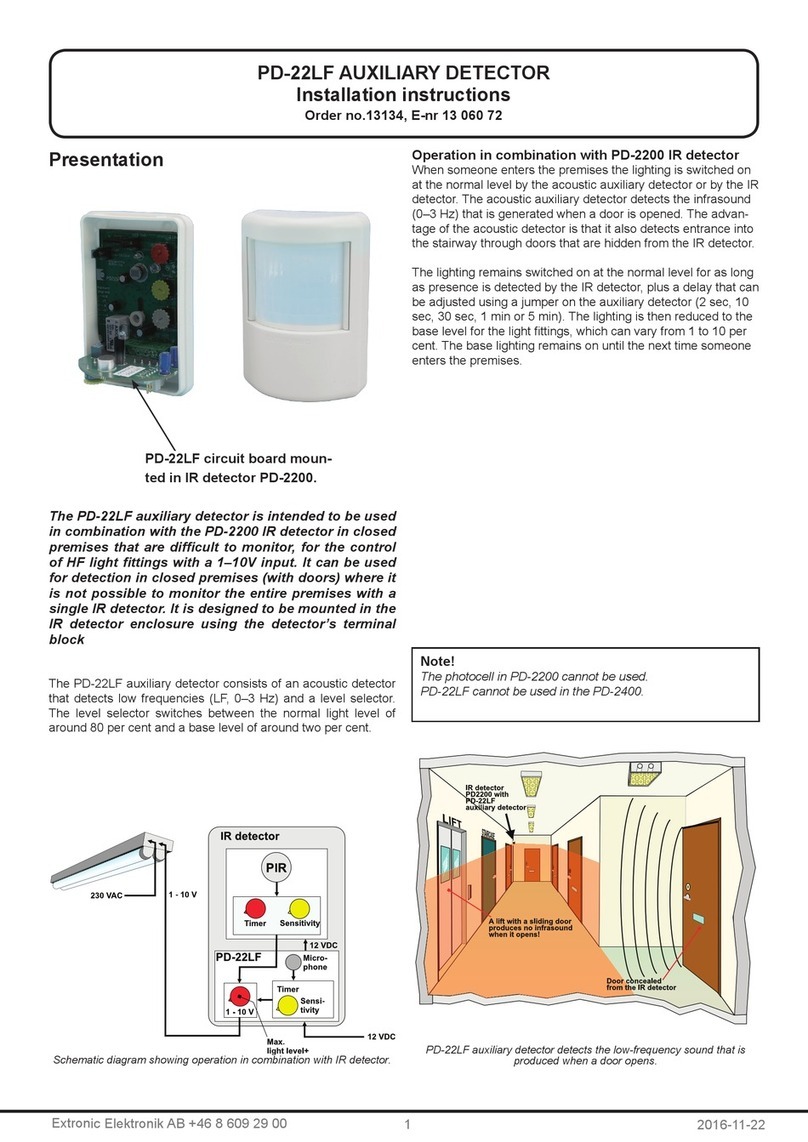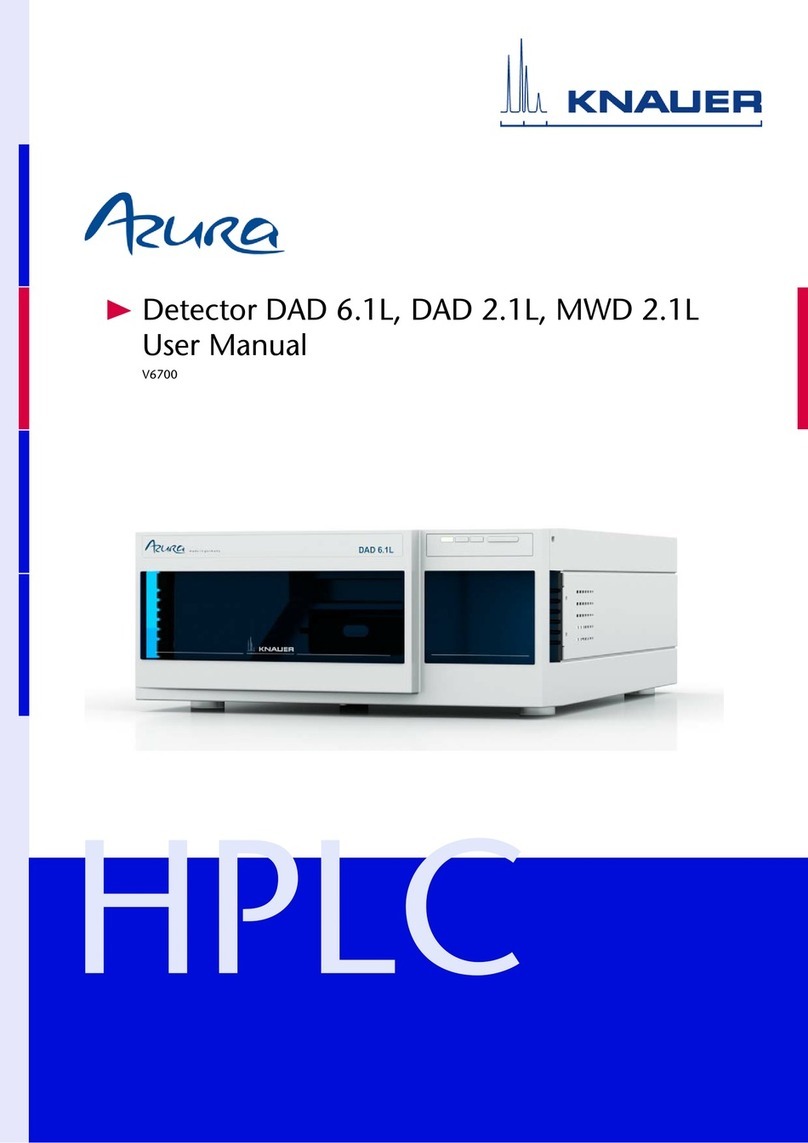
When mounted at heights above 3 metres there could be
a signicant reduction in the range of detection and the
target will have to move a greater distance within the eld
of view before an alarm is generated.
WALK TEST
The range of the detector increase without the front
protective cover. Therefore the front cover must be tted
to establish the correct beam pattern alignment and when
testing the outputs. Use the programming chart to adjust
the range as necessary and pan and tilt the lens module
over the eld of view to obtain the correct coverage area.
When the ‘program’ button is pressed momentarily the
blue indicator lights and pulse count ‘1’ is automatically
selected. The unit can then be aligned. The blue indicator
will light on the D-TECT Dual AM every time a detection
takes place. This test mode will automatically cancel ve
minutes after last detection. Alternatively, remove the
power and then re-apply.
OPTION DEFINITIONS
PULSE COUNT
This is the number of times the unit has to detect on both
of its sensors before signalling an output.
LED MONITOR
LED Off - LED disabled.
LED on - LEDs signal a detection.
N/OPEN & N/CLOSED
These are magnetically immune volt free relay contacts
used to trigger alarm inputs on connected equipment.
The contacts are rated at a maximum of 24 AC/DC @
50mA.
ACCESSORIES
GJD is able to supply the following accessories to aid
installations:
GJD304 Conduit cable entry adaptor ring
GJD305 Pole mount clamp
GJD380 Walk tester
CONNECTING THE UNIT
MULTIBEAM ALIGNMENT & MASKING
The GJD multifunction lens tted to the D-TECT Dual AM
detector produces 7 long range beams and 7 medium to
short range curtain beams. Movement across the beams
produces the best response and range for the PIRs,
whilst movement towards the detector produces the best
response for the microwave sensor. The unit detects
the changes in heat and movement in the beam pattern,
therefore items such as trees, shrubs, ponds, boiler ues
and animals should be considered when positioning the
detector.
The detector module is tted with two sliding shutters to
reduce the detection angle. An additional set of curtains
is provided should the beam pattern need to be narrowed
even further e.g. if the minimum detection angle of 10
degrees is required.
The curtains are tted to the pan and tilt module as
indicated in g 8. Each section of the detectors lens gives
a coverage pattern of around 10 degrees.
When mounting higher than boundary fences rotate the
module and mask off any beams, vertically or horizontally,
that fall outside the area being covered. Use portions of
the self-adhesive silver mask applied to the rear, smooth
side, of the lens. Always replace the lens the correct way
up to ensure exact beam pattern coverage (the top of the
Fresnel lens is marked - TOP). See g 9.
A/M ALARM/NC TAMPER ALARM/NO + -
9-15 VDC
BEAM PATTERN
SPECIFICATIONS
Microwave
Frequency
10 dBm EIRP
Operating frequency (country
specic)
GJD369/25 - 10.525GHz
GJD369/35 - 9.35GHz
GJD369/87 - 10.587GHz
GJD369/41 - 10.41GHz
GJD369/90 - 9.9GHz
Detection Area Programmable between 10 & 30m
Coverage 10-70 degrees detection angle, 30m x
30m coverage max.
Adjustment 180 degree pan + 45 degree tilt
Fresnel Lens 28 zones for each Pyro pair, which can
be masked with the curtain sliders
Customised Optics Double silicon shielded quad element
eliminates 50,000 Lux of White-Light
Microwave Module Operating Frequency. Country
dependent GHz 10
dBm EIRP
Outputs Silent solid state magnetically immune
No. 1 N/OPEN Volt free relay signal
contact 24VAC/DC
@ 50mA with an
integral 25R series
resistor
Alarm time 5
seconds
No.2 N/CLOSED Volt free relay signal
contact 24VAC/DC
@ 50mA with an
integral 25R series
resistor
Alarm time 5
seconds
Power Input 9 to 15 VDC
Current 15mA (12V nominal)
Pulse Count 1 - 2
Temp Compensation Digital sensitivity adjustment
Control Digital microprocessor - non volatile
memory
Walk Test Output test mode with LED indication
Operating Temp -20ºC to +55º C
Conformally coated electronics for
increased stability
Housing High impact zinc alloy
Protection Rating IP65
Dimensions 145 x 120 x 115 mm
Weight 750grams NET, 880 grams GROSS
Mounting Height Variable - optimum height 3 metres
Cable <200m Utilising all three outputs (incl. tamper)
- 8 core 7/0.2mm
Cable <500m Utilising all three outputs (incl. tamper)
- 8 core 16/0.2mm
PROGRAMMING
The user can individually program a number of
congurable settings as illustrated in the programming
chart. Factory settings are shown as shaded boxes.
Changes to the existing settings can easily be made. To
reset the factory settings simply remove power from the
detector, press and hold the program button (see g 10)
whilst temporarily applying power to the detector: either
before installation, with a PP3 battery, or by applying
12 volts to the unit on site. The Amber LED will ash 10
times, the blue LED will ash 3 times then the blue LED
will ash rapidly then release the program button.
PROGRAMMING CHART
OPTIONS
SETTING
123
1Range (m) 10 20 30
2Pulse Count 1 2
3LED OFF ON
EXAMPLE
To change the LED setting from OFF to ON.
1. Press the program button three times and release the
button.
2. Wait until the indicator goes off.
3. The indicator will now ash once.
4. Press the program button twice and release the button.
5. The indicator ashes twice showing that the option has
been stored and the detector returns to normal operation.
SIMPLIFIED EU DECLARATION OF CONFORMITY
Hereby, GJD Manufacturing Ltd declares that the radio
equipment type GJD369 D-TECT Dual AM Detector is in
compliance with Directive 2014/53/EU.
The full text of the EU declaration of conformity is
available at the following internet address: gjd.co.uk
